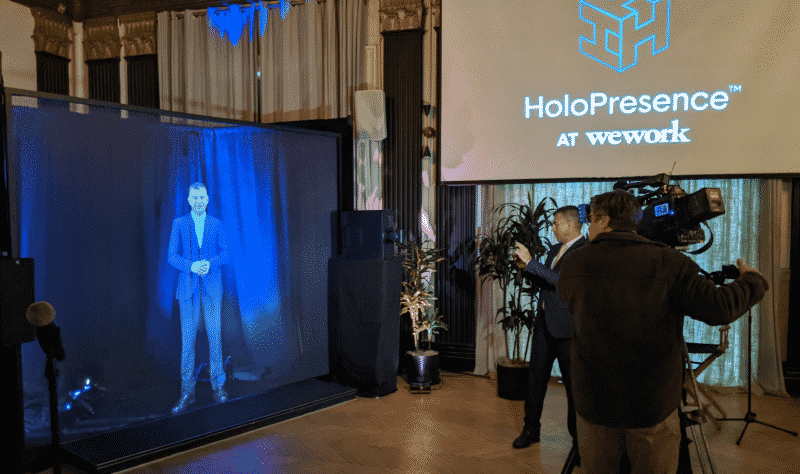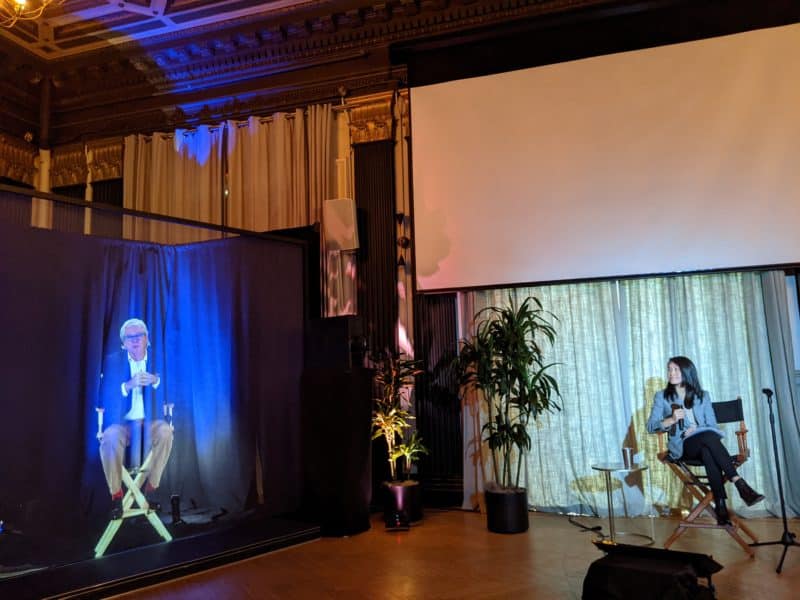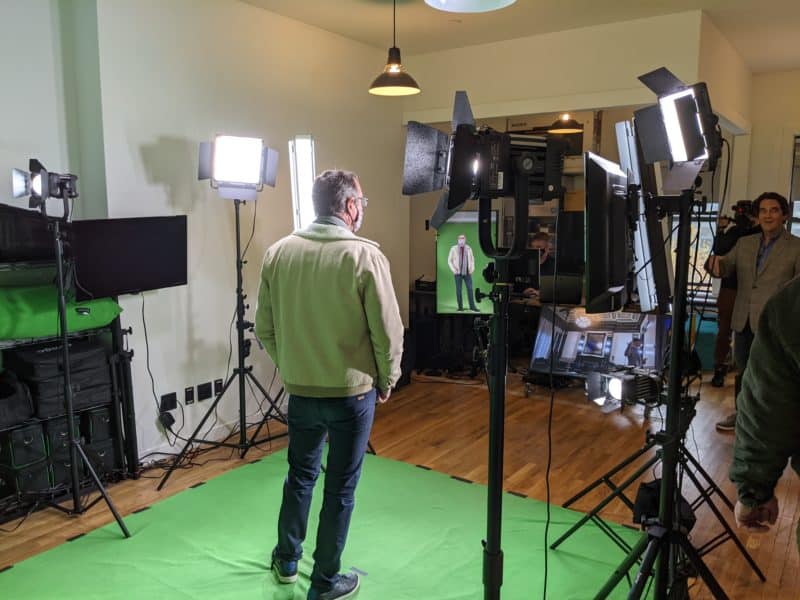
As the events space continues to evolve, event marketers have a new option when planning live, virtual or hybrid experiences. Instead of using Zoom and showing a remote participant on a screen, they can use hologram technology and place a three-dimensional version of the person on a stage, or in a boardroom.
Since patenting their end-to-end holographic capture and display technology in 2017, Toronto-based company ARHT Media (pronounced “art”) has expanded their presence at events and in other corporate use cases. Most recently they partnered with WeWork to allow members access to holograms in 11 locations, including New York, Los Angeles, Miami and Washington, D.C.
Holograms on stage
Event marketers who want to book high-profile speakers have budget and logistical constraints that limit their options. Travel restrictions and other public safety concerns during the Covid-19 pandemic have added to the difficulties.
“The value for organizations is getting someone to a meeting or conference who might not be able to participate otherwise, and concern around travel during a pandemic heightens this challenge,” said ARHT Media CEO Larry O’Reilly.
Speakers around the world don’t have to spend hours or days traveling to an event site. They only have to get to a capture studio, which can transmit a live or recorded talk. Meanwhile, on the event stage, a “HoloPresence” display shows a life-size three-dimensional hologram of the presenter.

This reduces travel expenses. Also, if a highly coveted speaker can present at more engagements holographically than they can in person, they might charge lower fees per appearance, reducing the overall cost.
“There is also the bonus of reducing your carbon emissions by not flying,” said O’Reilly.
Because the capture and display capabilities are live, the hologram is fully present in the event space and can interact with attendees, answer questions and respond to everything happening at the site, even if the speaker is halfway around the world.
Holograms in live conferencing
WeWork announced a strategic partnership with ARHT Media in May 2021, bringing the holographic technology to up to 3,500 enterprise customers through the WeWork network as more locations are equipped with the capture studios and displays.

The WeWork partnership will expand the use of holograms through accessibility and visibility, according to O’Reilly.
“It will be much easier and more convenient to have a demo of the product or actually use the product when it is permanently installed,” he said.
There will also be a network effect for corporate clients who have the systems installed at their own offices.
“Any enterprise client that installs our technology at their own locations will have the benefit of being able to access speakers and talent at WeWork locations as well,” O’Reilly explained.
This expanding holographic network offers flexibility for teams that are separated by great distances so that they can meet and work together. The capture studio’s hardware, including camera, monitors and sound, allow a person in the studio to respond in real-time to what’s happening in the conference room miles, or continents, away.
Holograms can also be captured and transmitted in a virtual environment for virtual or hybrid events, adding to the options for event marketers and other corporate teams.
Consumer and retail activations
In 2020, during the first and second waves of Covid-19, ARHT Media gained visibility in their application of holograms for NBA broadcasts on ESPN. At the time, players were quarantined in a bubble, playing all of the season’s remaining games at a single site, in Orlando, Florida.
Read more: HBO Max leans into digital experiences in stores
Using the holographic technology, players in the bubble could be interviewed by on-air talent located elsewhere, or talent in the bubble could be shown in-studio via hologram. Because the interactions are in real-time, the interviews are natural and proved to meet the high standard of broadcast television.
The technology has also been used for NCAA Final Four hoops, and for the 2020 NCAA Championship Football Game.
“It has been used many times in trade shows and other retail activations such as Rogers Communication 5G Experience Centre, which created a personal concert experience in cooperation with Live Nation,” said O’Reilly.
He added, “Last year Art Basel Hong Kong beamed in gallerists from Singapore, New York and Zurich to sell their art in a special gallery at their Hong Kong show. This year, they are going to have two of these special galleries.”
Marketers seeing these use cases can think of how their events might benefit from additional buzz and curiosity by attendees. Behind this novel technology, there is also a practical capability that links people together across great distances.
But also, as could be seen in the live demonstration at New York’s WeWork last December, the making of a hologram is itself an experience that consumers or B2B conference attendees might enjoy. Event marketers will weigh all of these benefits of deeper engagement as they consider what new technology will give their brand an edge.





